E-MTBs have barely taken a breather since they were first launched into our world. Evolving from their earliest inception as mountain bikes with a motor clumsily fixed onto the bottom bracket, we’re now seeing eye-catching bikes with well-considered designs and ride characteristics with the propensity to leave us open-mouthed and exhilarated. The industry clearly isn’t resting on its laurels, and the coming season is packed with exciting new launches. Here’s our run-through of which innovations are worth paying attention to in the coming season.
The motor: evolution instead of revolution
Sadly, no real revolutions to speak of in the coming season, but every single brand has invested in tuning and upgrading the current systems, which – on occasion – will make a massive impact on how the bike not only looks, but also rides. The major players have been busy: Bosch dropped their integrated battery, the PowerTube; Brose worked on improving the performance of their motor; and Shimano’s update to their E-TUBE app permits riders to individually adjust the levels of pedal assist.
Bosch PowerTube and eMTB-Mode – stylish integration and a well-considered software update
German manufacturer Bosch has gone all in for evolution in 2018 rather than another revolution, and the hardware for their Bosch Performance CX motor has duly gone untouched. Software-wise, the brand have cleverly flexed their know-how to develop a really valuable update with the eMTB mode. This generates a better, more consistent output when starting off your ride, and switches automatically between tour to turbo while riding. The eMTB mode replaces sport mode, but the rest go unchanged. In our eyes, a sensible upgrade for all Bosch Performance CX owners – and it doesn’t cost a penny.
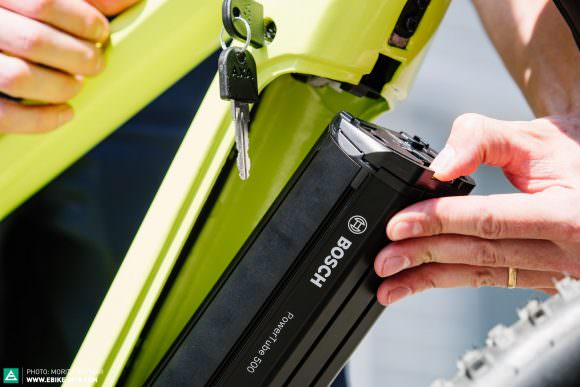

In order to ease the task for bike designers to integrate the battery into their designs, Bosch have now introduced two integrated PowerTube batteries, both with 500 Wh capacities alongside their PowerPack. But while many bike brands have ventured forward to rely on full integration using the PowerTube, there are still certain brands (like Moustache and Trek) choosing to retain the PowerPack. Motives vary, but it’s reputedly down to the late availability of the PowerTubes and the resulting higher centre of gravity with the internal batteries.
Brose Drive S – Same design, more power
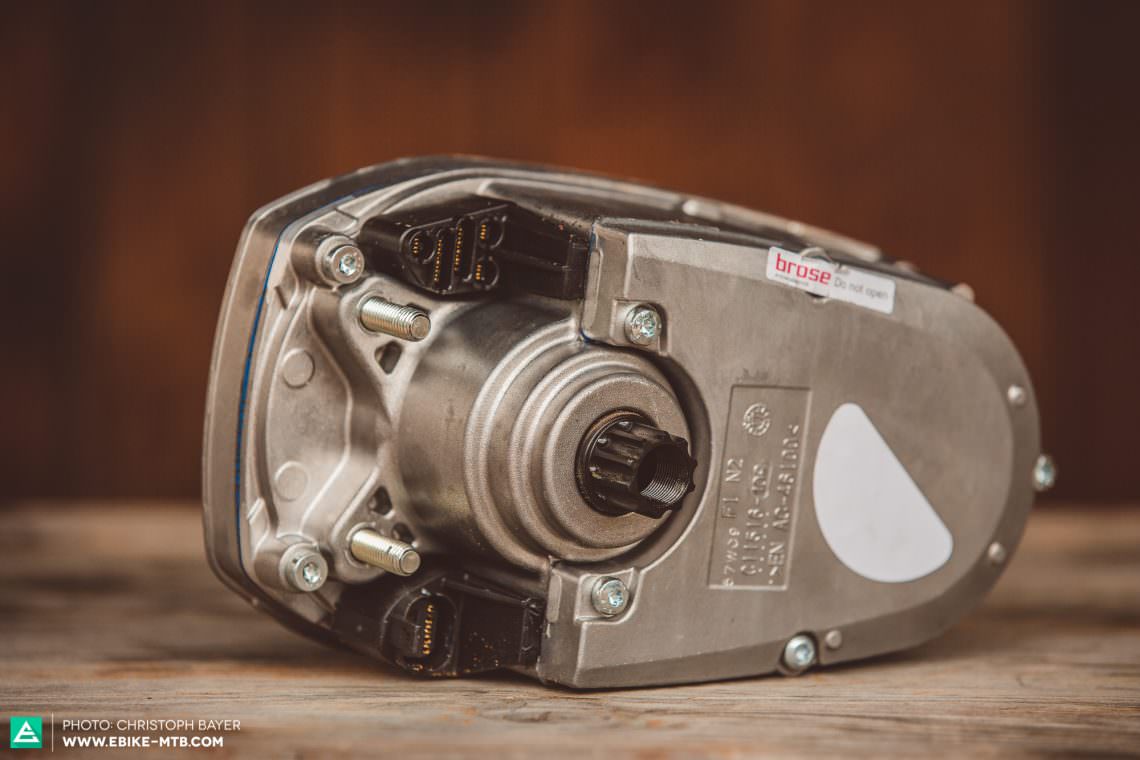
Visually the well-known Brose motor might look the same, but there’s a whole lot going down inside: the Germans have installed sixteen new electronic parts inside the complex belt drive, leading to performance gains of up to 15%. The maximum power of 90 Nm is now available at a wider cadence. Trust us; it isn’t all marketing hype either – our First Ride test explains it all! The new power package goes by the name Brose Drive S and a lot of ‘serious’ E-MTBs are going to be adopting this technology. The well-known Drive T looks like it’ll be the preserve of touring bikes for the future.
Updates to the Shimano E-TUBE app
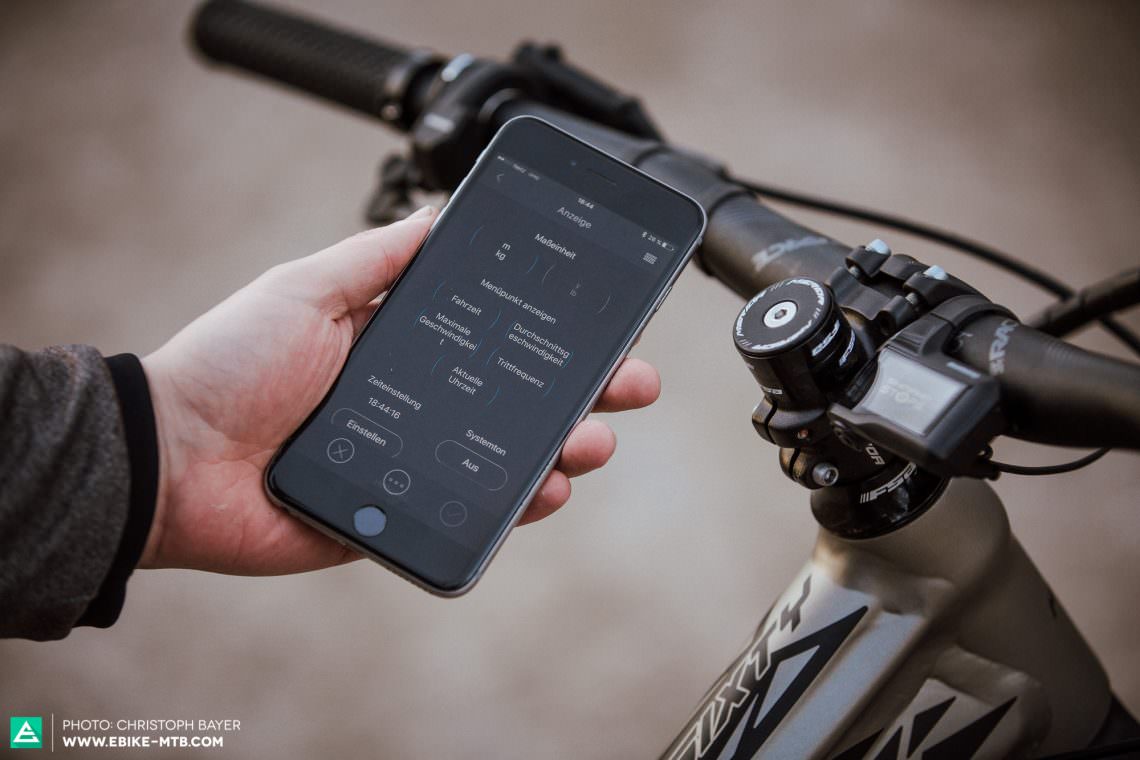
Smartphones serve a purpose that goes way beyond just chatting with mates, checking the weather forecast, or playing Candy Crush – from August onwards you can use yours to adjust the pedal-assist for your Shimano STEPS E8000 motor. Right now, we know a lot of riders complain that the trail mode is too weak, and that the subsequent jump to the boost mode is too vast. This update for the E-TUBE app means you’ll be able to individually tune and set the levels to suit your taste.
The most exciting bikes of 2018
Carbon is the buzzword for E-MTBs in 2018, with brands like Specialized, Thömus, Mondraker, Rocky Mountain, and BMC all launching new models with this hallowed frame material. Interestingly, it doesn’t look like their focus lies on saving weight, but rather the improvements that carbon makes to the bike’s stiffness and the opportunities it unleashes for the frame design. However, Trek’s revised Powerfly and SCOTT’s new E-Genius are both proof that carbon isn’t the only route to a great bike. ROTWILD have zoomed in on the details for their workload and finally launched the long-waited changeable battery. Speaking of batteries: if you’re looking for the ultimate range, take a look at BULLS and Haibike for 2018.
Specialized go carbon with the Turbo Levo for 2018
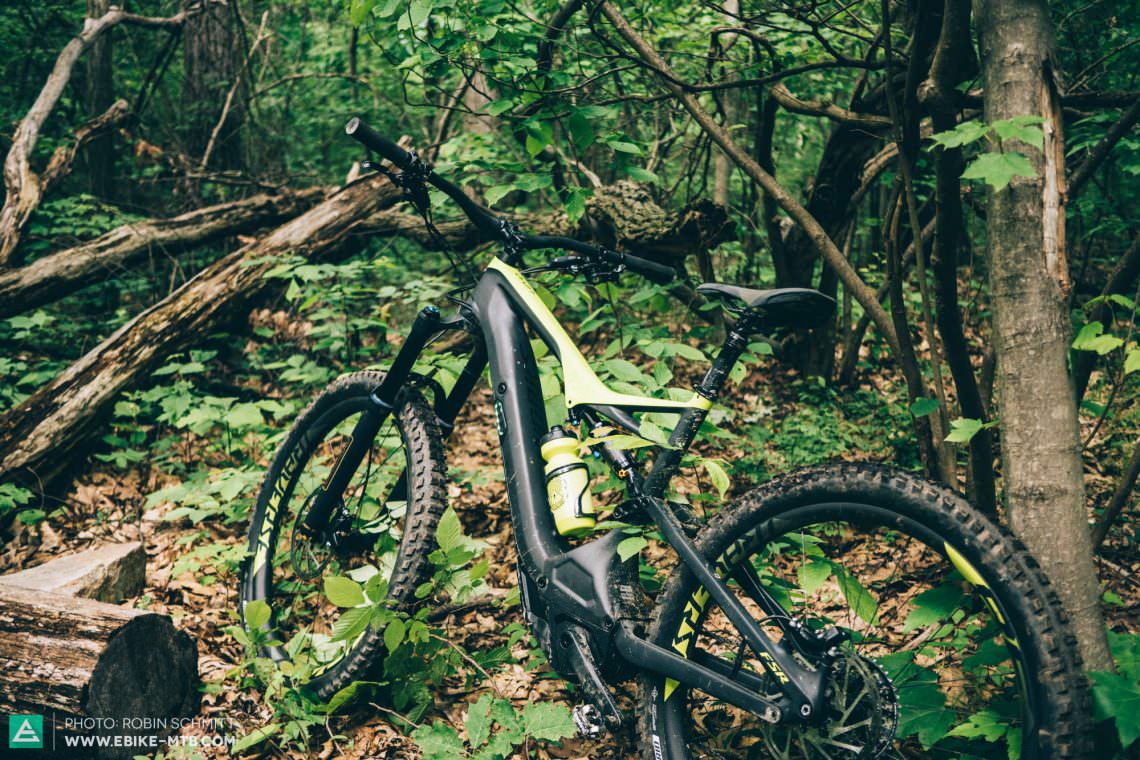
The Specialized Turbo Levo is undoubtedly one of the most popular E-MTBs the world has ever seen, and now the Americans have given their success story a serious overhaul. One highlight is the sleek carbon frame that lends the bike added stiffness and great design. The Levo still comes in an aluminium version, and all of the coming models have the new Specialized Turbo 1.3 motor for enhanced performance and improved heat management. Prices for the Levo Carbon start from € 5,999 and head right up to € 9,999 for the top model.
SCOTT E-Genius 2018 with a brand-new frame design

The SCOTT E-Genius has repeatedly convinced us of its greatness in the past, grabbing multiple test wins against hot competition. For the coming season the Swiss brand have adopted a new frame design with a far more downhill-focused, modern geometry (longer frame, shorter rear end), as well as a new motor. In future the E-Genius is going to rely on a Shimano STEPS E8000 rather than their previous choice of a Bosch Performance CX motor. The battery is fully integrated into the large downtube and the bike is compatible with both 2.8″-wide 27.5″ wheels as well as 2.6″-wide 29ers. There’s a flip chip in the rear shock mount to adjust the geometry and work for the wheel sizes. Don’t miss our First Ride Review of the new E-Genius, tackling the dicey question of which wheel size is best for which rider.
Haibike Modular Rail System and 1,000 Wh battery
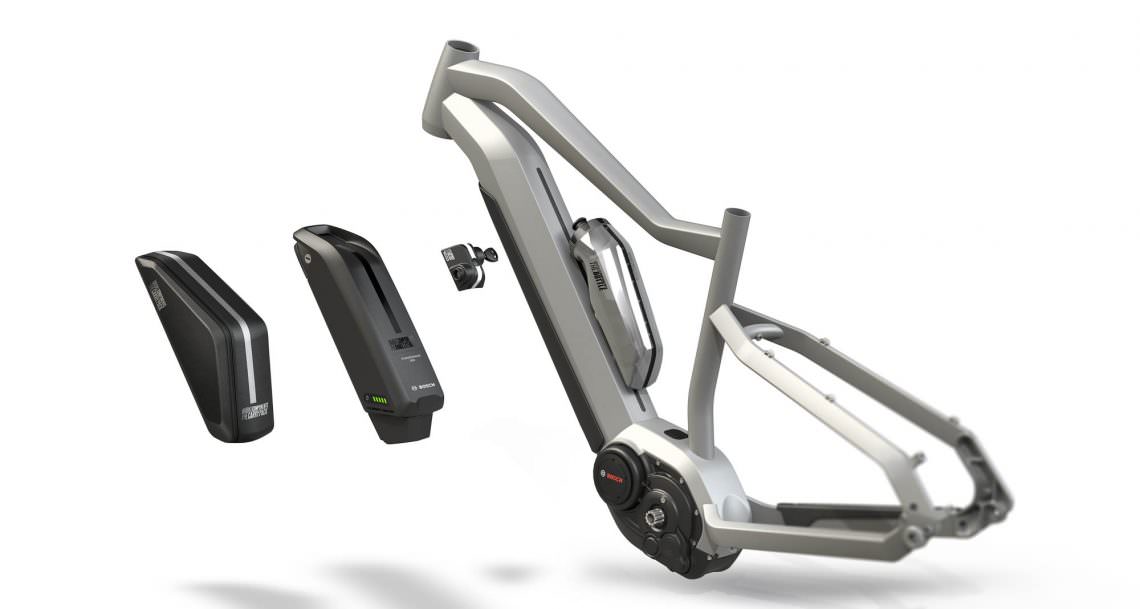
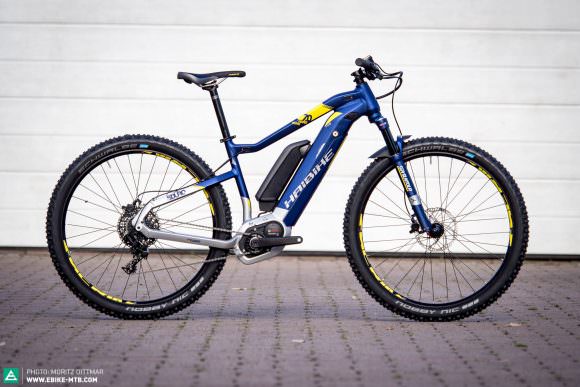
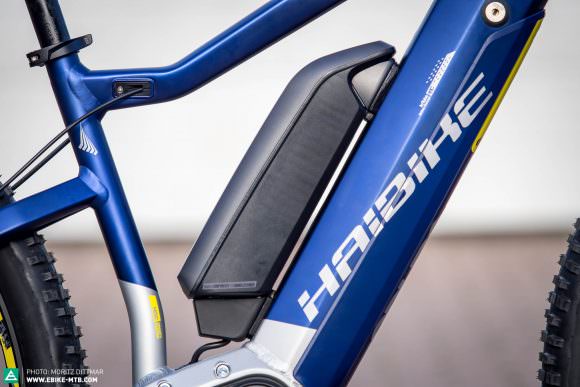
Haibike never fail to stun audiences and drop a real innovation at their annual Dealer Days in Schweinfurt, and this year was no different. All bikes with the integrated Bosch PowerTube battery feature the brand new Modular Rail System, which allows riders to fix a bottle, bag or lock on the downtube. The most exciting add-on will be available for hardtails only: the RangeExtender allows riders to adapt an external Bosch PowerPack (with another 500 Wh) onto the already integrated battery, bringing the capacity up to a not-insignificant 1,000 Wh. Haibike have come up trumps with a sophisticated, slim design to integrate the 500 Wh battery.
Haibike XDURO Nduro with revised geometry and a Bosch PowerTube
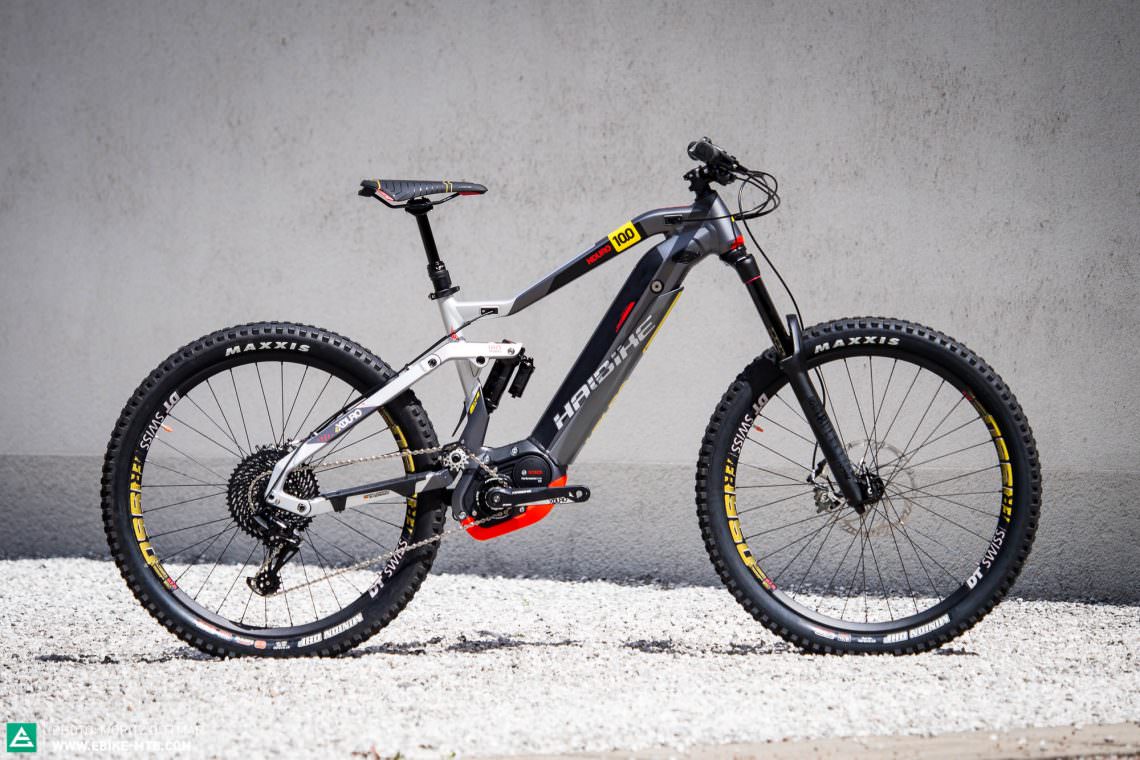
For the coming season Haibike have created a bit more of a division between the SDURO and XDURO collections, moving the difference away from the motor and into the bikes’ actual intended terrain, geometry, and price. The new XDURO models are looking more sporty with longer geometry – take the new XDURO Nduro, for example, which is longer (460 mm reach on the size L), slacker (65° head angle), and lower (bottom bracket dropped by 5 mm), turning it into a real ripper on the descents while the steeper 75° seat angle will elevate it on the climbs. In our eyes Haibike have made all the right moves, essentially eliminating our former criticisms that argued against its use on rough trails. However, those looking for a more cruising-style, upright position instead of the ultimate trail performance will be better suited to the SDURO lineup. For 2018, both the XDURO as well as SDURO models will be available with either a Bosch or a Yamaha motor.
BULLS E-Core Evo series with Shimano Twin Core battery

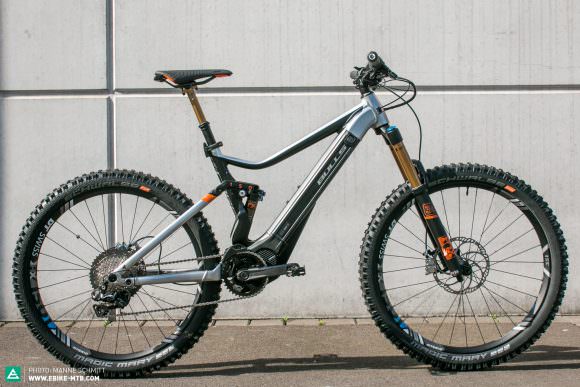
Big things are happening for BULLS this season, as all of their E-Core Evo bikes with Shimano motors now have space for two 375 Wh batteries in their newly revised downtubes. With both batteries mounted, the E-Core Evo sports a pretty substantial 750 Wh capacity, but the other alternative is to use the spare space for the second battery as storage space for essentials (like tools). The lineup is crowned with the top-end E-Core Evo EN that’s made for the really burly stuff with 180 mm suspension, ready-to-rumble downhill geometry, and an uncompromising spec. The E-Core Evo RS and AM take a slightly more moderate approach, but both bikes have 150 mm of travel. There’s also the E-Core Evo TR with 120 mm of travel as well as the Twin Core system. The E-Core bikes will hit shops in February 2018, each coming with one battery as standard.
Rocky Mountain Altitude Powerplay
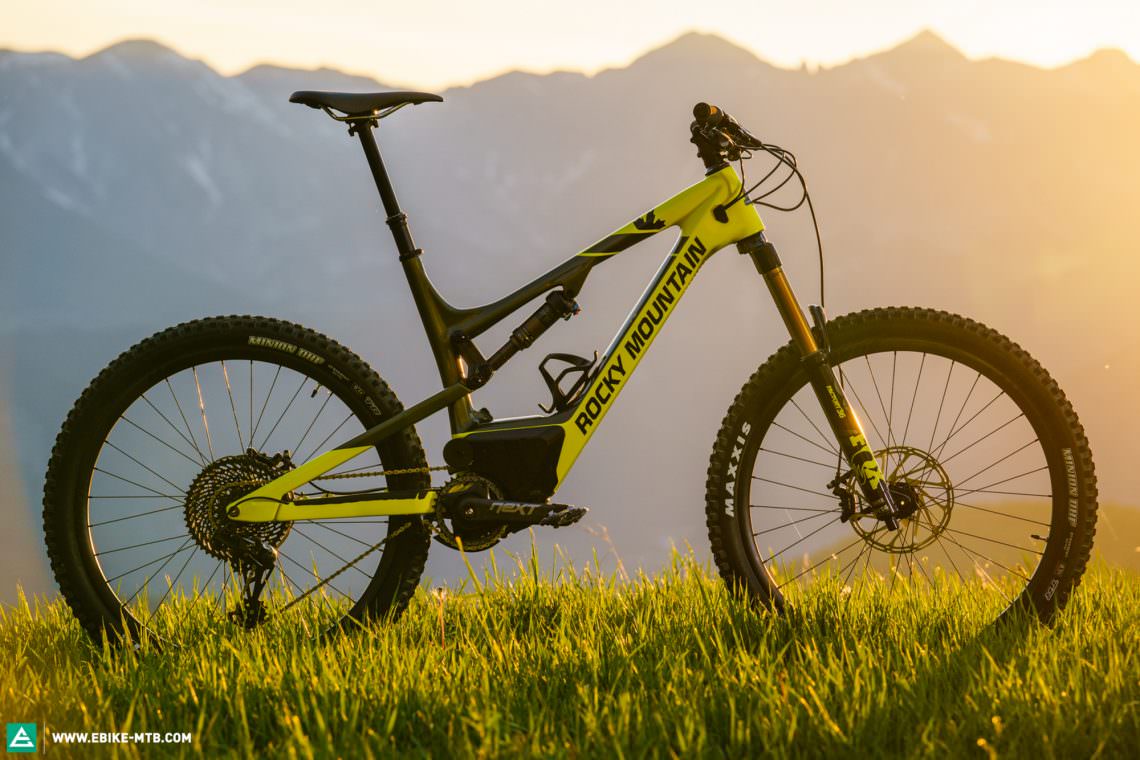
E-MTBs are still something of a rarity in Canada, but we reckon that’s about to change. Cult brand Rocky Mountain are the first local manufacturer to introduce an electronically supported bike into their range with the Altitude Powerplay. Their aim while developing the Powerplay was to imitate the bike’s non-motorised counterpart to the maximum – and they set about succeeding by designing their own motor, whose compact design means they can retain the same geometry. The 632 Wh battery is solidly integrated into the carbon downtube. Plans speak of three models costing between € 6,000 and € 9,700. So far we’ve only had a chance to test a pre-production model at the official launch, but while we were sold on its agile handling, the guide pulleys on the motor created a lot of noise and the brand’s own app still hadn’t become available at this point. That being said, it was very promising and we’re excited to test it properly!
Trek Powerfly 2018 – the same, but different
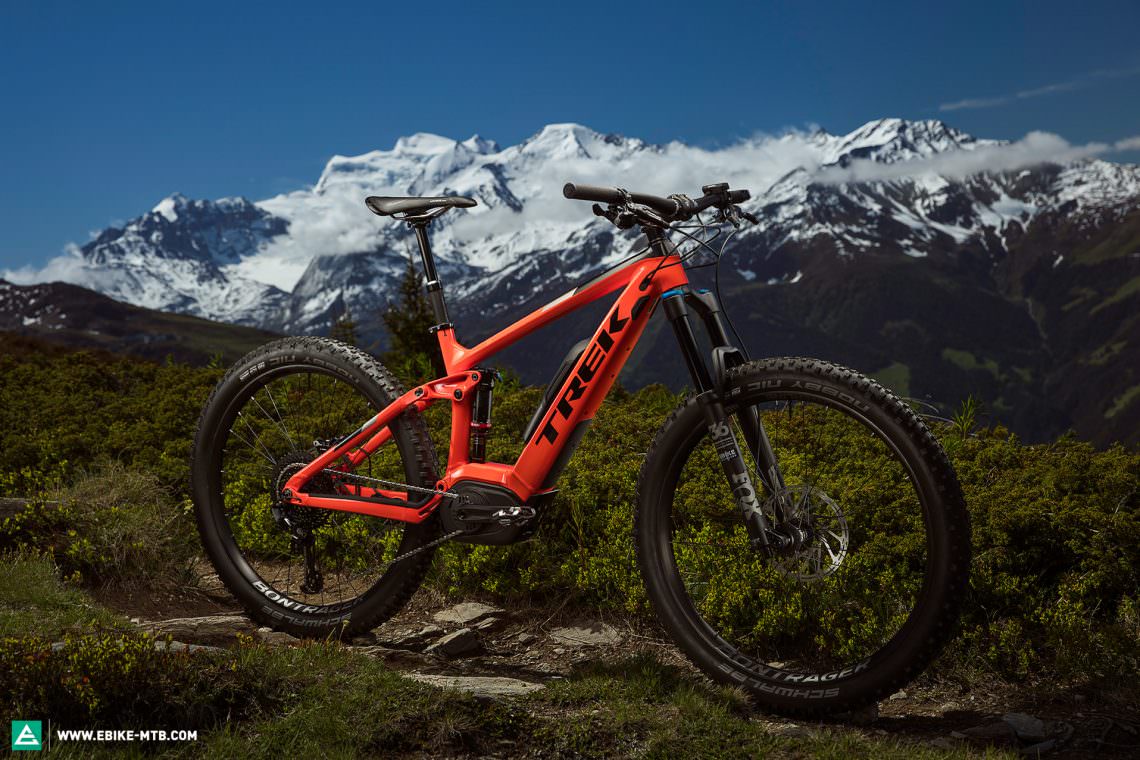
Trek’s success story, the Powerfly, has been revamped for the coming season with a new downtube, the nicely integrated Bosch Powerpack, and a revised motor mount. They’ve also revised the spec to render it more durable and more capable of dealing with the higher stress of E-MTBs. You’ll be pleased to hear that its smooth geometry and great climbing capabilities will stay the same. The Powerfly 2018 is already out with either 130 mm or 150 mm of travel. We’ve pitched the two models head to head in issue #011, and can now reveal which rider would suit which model.
ROTWILD dig into the details for 2018
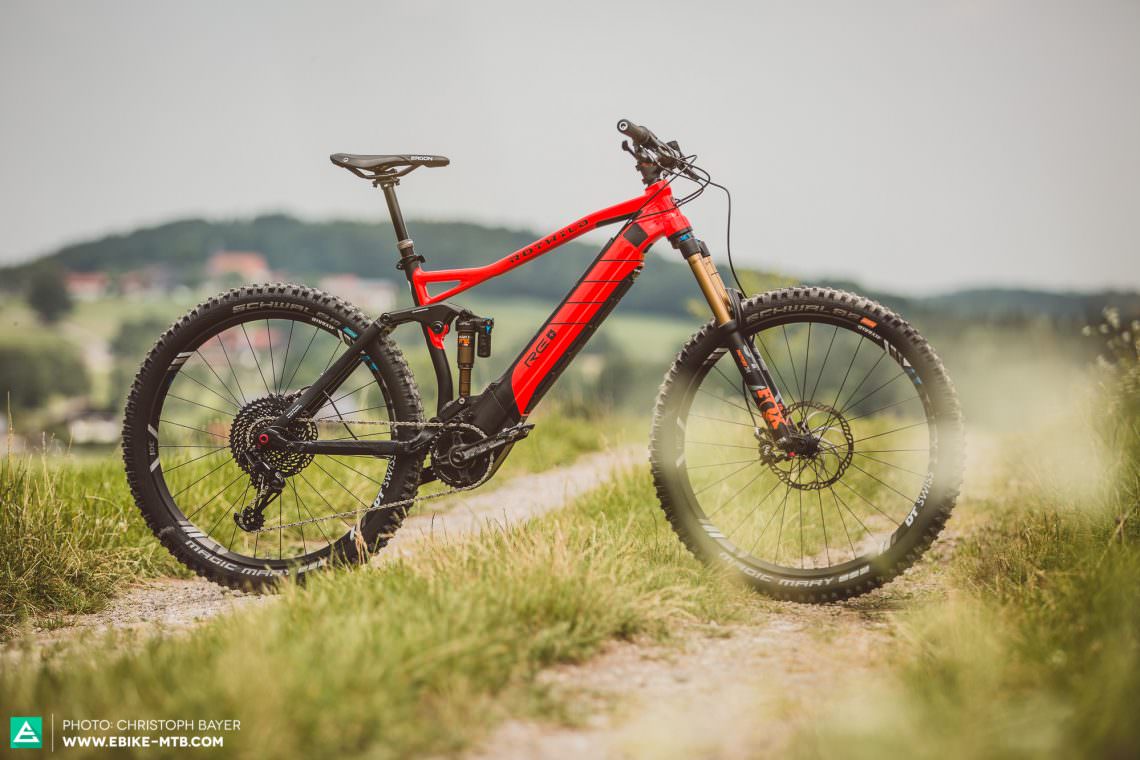
ROTWILD clued into the wishes of their customers for 2018, and have finally launched the much sought after changeable battery, which will feature on all new bikes as well as be retrofitted onto older models. The brand have duly switched the once-closed IP (Integrated Power Unit) for an open version. Now with a bigger capacity, the 660 Wh battery is simply secured with a bolt and can be removed from the underside. Fortunately, there’s still room for a bottle cage mount in the frame’s triangle. Alongside the new battery, ROTWILD have also adopted the powerful Brose Drive S motor. We’ve had the ROTWILD R.E+ Ultra on test in issue #011, which rocked up with new Schwalbe Magic Mary 2.6″ tires, DT Swiss Hybrid wheels, and a SRAM EX1 drivetrain.
NICOLAI EBOXX G16 – Rethink geometry!
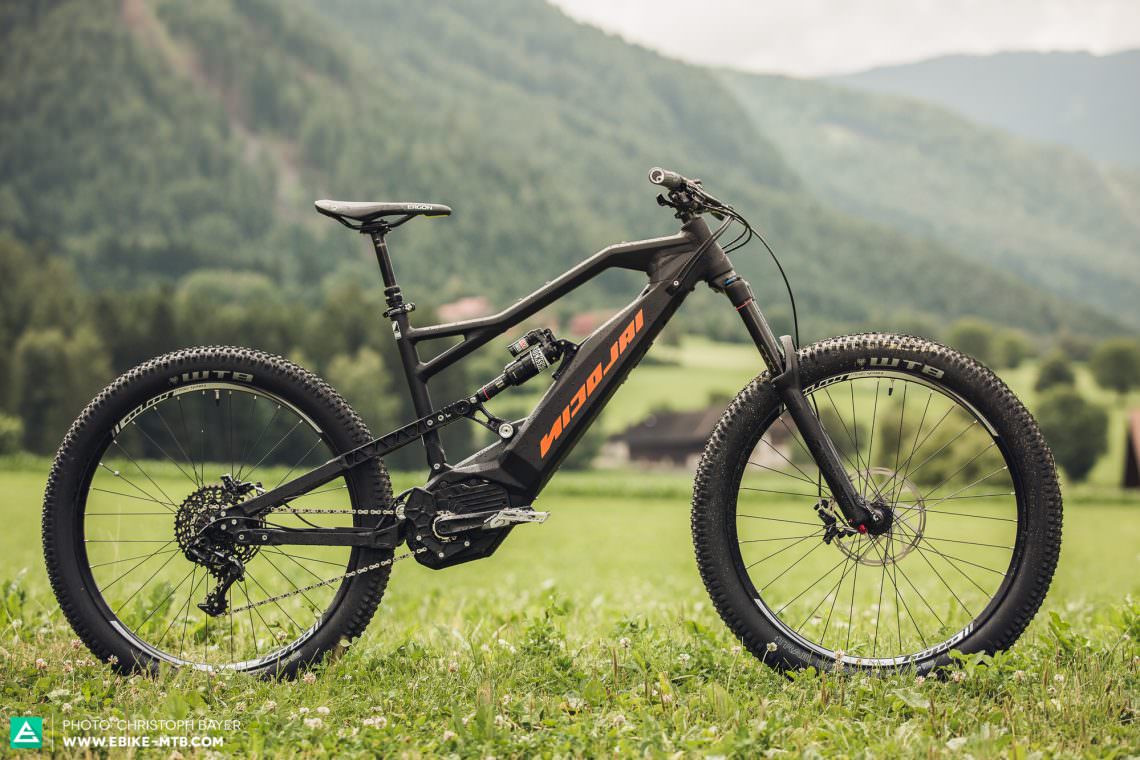
A staple within German bike manufacturing, NICOLAI have had E-MTBs in their range for years. In an exciting development, this coming season sees them launch something wholly new: the EBOXX G16. At the heart of the bike is its cast downtube where NICOLAI have managed to stylishly integrate the Bosch Powerpack. The bike’s image is dominated by its sheer length and slackness courtesy of its GeoMetron geometry. The brand scrupulously followed the belief that a long frame, slack head angle, and long chainstays will result in a super-smooth and balanced handling package; the addition of a steep seat angle should mean it’s a mean climber too. E-MOUNTAINBIKE Magazine issue #011 looks head-on at the question of whether this beauty has hit its targets.
Minor details, major effects – spec updates for 2018
SRAM launched the world’s first E-MTB specific drivetrain last year, and it undoubtedly created a stir. This year we aren’t short of brands introducing E-MTB-specific products that are reputed to better withstand the stresses of the sport. Wheels are a popular topic for 2018, seeing DT Swiss and Bontrager both make a show of goods. There’s also major growth for tire choice, and more brands are opting for more robust four-piston brakes. As major differences now come down to small details, we’re also bidding farewell to spoke magnets on wheels. With their first ABS series tires, Bosch has also marked a milestone for the safety of urban riding.
Goodbye, spoke magnets!

Specialized paved the way on the Levo, but now more and more brands are removing spoke magnets from their bikes. These penny-pinching magnets and speed sensors that fixed onto disc brake rotors once had the propensity to ruin a whole ride – and 2018 marks the end of their grip! SCOTT has created its own solution by designing magnets to fix onto the centre lock ring, and Shimano recently presented rotors to which you could attach the magnet. Whatever choice the brands make, we just want to see the end of those pesky things on the spokes – the risk of twisting was just too great!
Robust wheels from DT Swiss and Bontrager
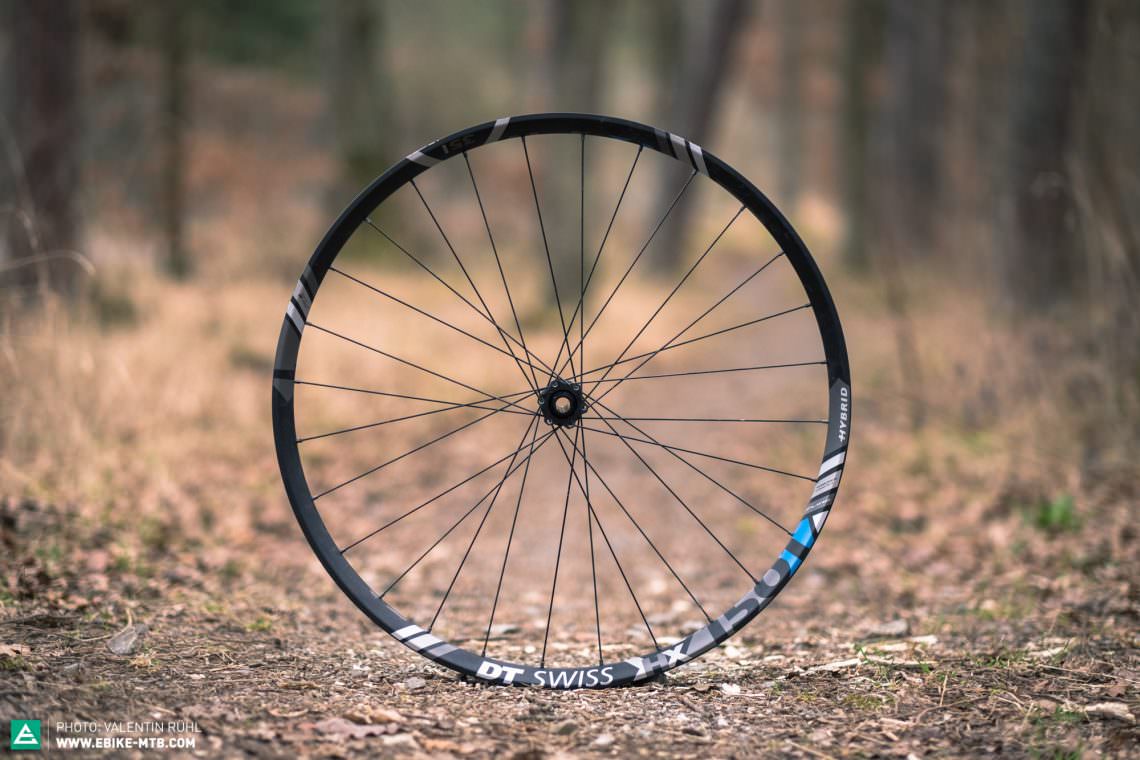
Wheels on an E-MTB are subject to stress from every direction – there’s not only the bike’s overall weight that the rims and spokes have to bear, but there’s also the motor’s power that loads the freewheel. It’s a hard life. As a result, DT Swiss has launched its Hybrid series to withstand these stresses, and customers can choose between four models in various widths. Bontrager have also developed special rims for their Powerline 40 wheels, making sure that they’re capable of satisfying their own downhill standards to give them the confidence for use on E-MTBs.
Schwalbe present their Magic Mary in 2.6″ and 2.8″ widths
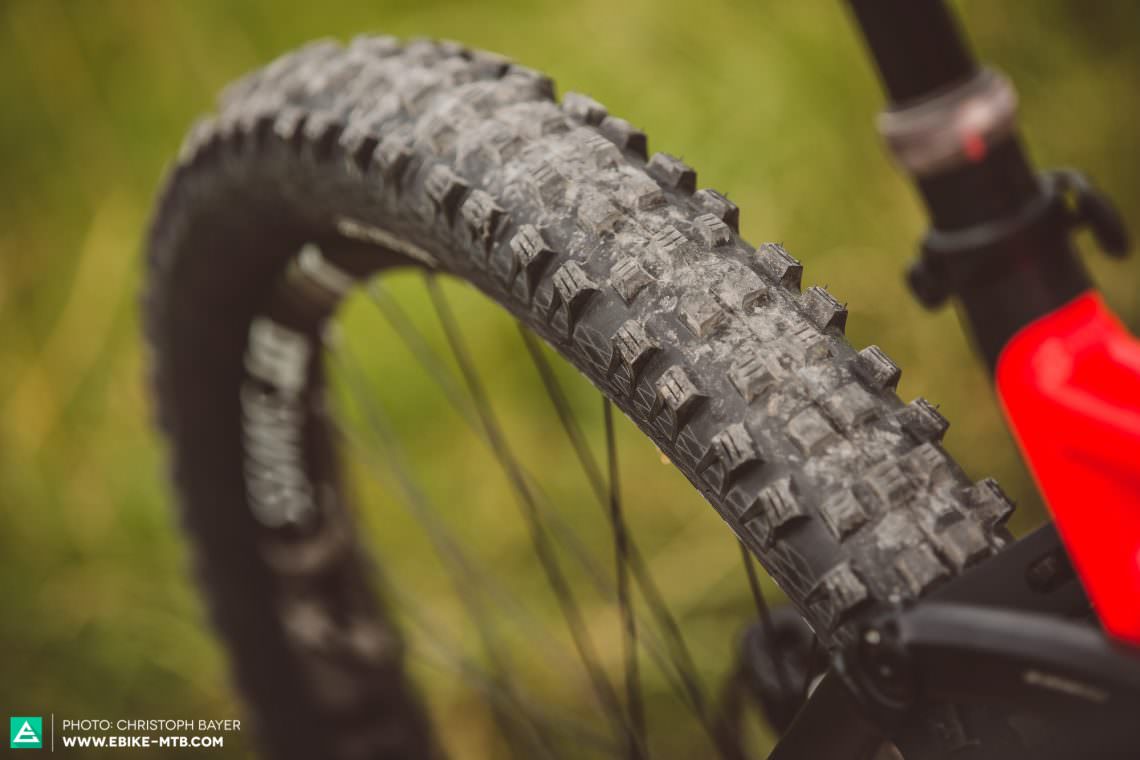
Up until now Schwalbe’s plus-size tires weren’t great for E-MTBs: the tread was too feeble, the rubber compounds just couldn’t deliver the necessary grip, and there was too little puncture protection. Fortunately, the new Magic Mary (coming in widths of either 2.6″ or 2.8″) looks like it will change all that. Now coming in the new ADDIX rubber compound with various strengths, there’s an extra Apex layer to stabilize the sidewalls and increase the puncture protection. During our first test ride there were some hiccups as a fairly brutal encounter with a rock gave us a pinch flat, with two holes in the tire and an unharmed tube. It’ll take more testing to see whether this was a one-off, but we’re feeling confident with the new Schwalbe tires!
Connected E-Mountainbikes

Specialized’s Mission Control app is still one of the frontrunners in terms of connectivity with E-MTBs, but Haibike’s eConnect app is making tentative steps forward, although it is still limited with its functionality at the moment. For the coming season we’ve heard a lot of brands announce their intentions, including Rocky Mountain, ROSE and FANTIC. They all want to connect their bikes to apps, whether it’s for configuring the bike’s set-up, navigating, or embedding emergency features.
Bosch eBike ABS – Anti-lock braking system
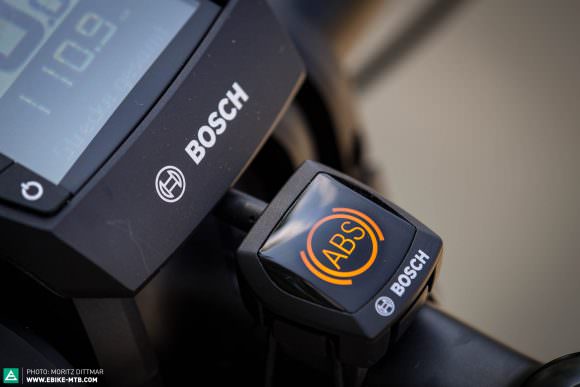

The Bosch eBike ABS is the first anti-lock braking system that’s going mainstream for 2018, and it should prevent the front wheel from locking up. It’s fed with energy from the main battery and will still stay active for up to two hours after switching off the pedal-assist. It features a hydraulic system with sensors on the disc brake rotors that’s capable of communicating with the main module. We gave the system an early test ride on tarmac and service roads, subjecting it to some intense riding and braking scenarios. The results were promising, as it effectively prevented the front wheel from locking up and the rear wheel from lifting. The system will initially be rolled out for hybrid and urban bikes, but it’ll be interesting to see if this technology will make its way onto E-MTBs in the future.
Conclusion
This coming year is where we see the sum of all these improvements come together to elevate E-MTBs to unforeseen levels. Carbon has paved the way for bike designers to improve integration, increase stability, and make damn good-looking bikes look even better – but it’s a material that comes with a price tag. The absence of any all-new motor is a really positive step in our eyes, confirming that the industry is concentrating on current products and not trying to reinvent the wheel over and over again. In terms of componentry and software, the playing field is very exciting, with a host of improvements emerging. The idea that a simple five-minute software update can make an impact on how a bike rides is one that gets us stoked. Connectivity is another topic with a rosy future, as more brands flex their know-how with a view to making bikes smarter. This will not only give a lot of information to the rider, but it’ll also improve your safety with better automatic emergency calls. 2018 is shaping up well!
Did you enjoy this article? If so, we would be stoked if you decide to support us with a monthly contribution. By becoming a supporter of E-MOUNTAINBIKE, you will help secure a sustainable future for high-quality cycling journalism. Click here to learn more.
Words: Photos: diverse









